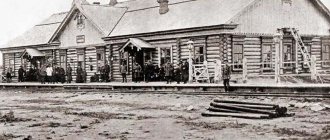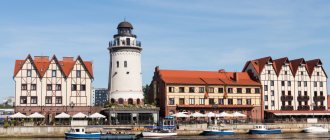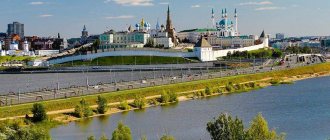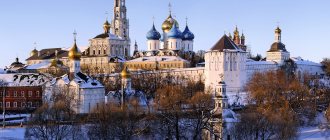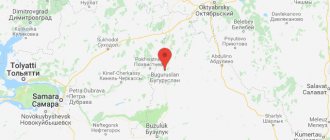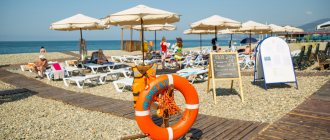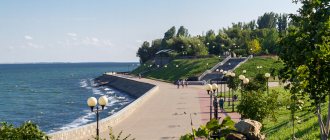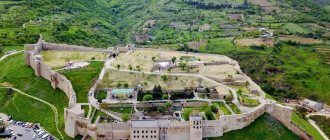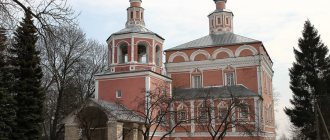| Souvenirs Ural gems Food Alcohol What to bring for men What to bring for women What to bring for a child “Royal” souvenirs Religious souvenirs Where is the best place to buy souvenirs |
Yekaterinburg is one of the largest cities in Russia, the unofficial capital of the Urals. The city with its color and rich history annually attracts tourists from all over the country. Travelers return home not only with impressions and photographs, but also with memorable souvenirs. What to bring from Yekaterinburg?
The list of popular souvenirs and symbolic goods is quite interesting - this includes paraphernalia with the logos of Ural rock bands, and the most delicious mayonnaise in Russia, and Ural gems in different variations, and even porcelain iconostases. Below is a detailed list of gift options with prices, photos and store addresses.
Photo: © Anna Kudryavtseva
Souvenirs
One of the most popular souvenirs from Yekaterinburg is a lizard. If you choose magnets as a gift, then you should pay attention to skillfully made magnets from a piece of malachite, on which sits a golden-colored lizard. Such a souvenir will cost from 250 rubles, but it will definitely stand out on the refrigerator and look incredibly authentic. There are other options for magnets made of stone: jasper, serpentine, obsidian, charoite. Magnets with compositions made of stones and Ural animals look charming: brown bears, moose, wolves.
Travelers bring crafts from local craftsmen from Yekaterinburg and the Sverdlovsk region as souvenirs. Among the goods produced in the region, it is worth bringing as a gift:
- Tavolga ceramics . In the settlements of Nizhnyaya and Verkhnyaya Tavolga, ceramic dishes have been made since the 17th century - since the discovery of large deposits of colored clay. By the end of the 19th century, there were several dozen pottery workshops in Nizhnyaya Tavolga. The dishes are made using a unique technology. It is also distinguished by its appearance - Tavolga ceramics have an emerald glaze and are hand-painted with engobes. The craft was revived - now in the Sverdlovsk region you can buy dishes from the Tavolzhskaya Ceramics workshop. The products are quite affordable - average cost: 200–400 rubles. for one item.
- Sysert porcelain . The production of porcelain at the plant in Sysert is classified as an artistic craft, since 80% of the process is occupied by manual labor. Most of the dishes are painted with an original local pattern, which is called the “Sysert Rose”. A malachite pattern is also found. Motifs from Bazhov's fairy tales are often used in the design of dinner sets - Sysert is the hometown of the Ural writer. The assortment of the Sysert porcelain factory includes tea and coffee sets, souvenirs (figurines, boxes, candlesticks), vases. Religious people can bring a porcelain iconostasis and various church utensils as a gift. Porcelain figurines will cost from 100 rubles. and higher. A pair of tea costs from 200 rubles. Porcelain egg - from 150–200 rubles.
- Nizhny Tagil trays . Artistically decorated iron trays from Nizhny Tagil have been known since the mid-18th century. In those days, trays were made using the forging method, and their edges were decorated with openwork. The surface of the trays was painted not only with ornaments, but also with drawings on historical and mythological themes. Over time, the painting became simpler, and floral arrangements began to predominate on the trays. Such drawings are applied using the swing writing method. Original trays cost from 350–400 rubles. depending on size.
- Birch bark products . There are many birch groves in the Sverdlovsk region. According to ancient beliefs, products made from birch bark protect against the evil eye and misfortunes. Folk craftsmen skillfully make various birch bark products: from traditional bast shoes and baskets to original sugar bowls and bread bins. Souvenir shops also sell women's jewelry woven from birch bark in the ancient Russian style, and children's toys made from birch bark.
Sysert porcelain Photo: © Tatyana Vasilyeva
Ural gems
The famous semi-precious stones from the depths of the Ural Mountains are the first thing that is brought from Yekaterinburg. The first stone-cutting factory in Yekaterinburg opened in 1726. Masters of jewelry and stone cutting were trained under the patronage of the Imperial Academy of Arts. Even then, local craftsmen made jewelry and interior items for the royal court. Over several centuries of stone mining, more than 200 types of minerals have been discovered in the Ural Mountains. Among them are both rare stones and very common ones. First of all, tourists bring from Yekaterinburg as a gift:
- Malachite . The stone is associated with Yekaterinburg and Bazhov’s fairy tales. Not only boxes are made from it, but also jewelry, decorative figurines, writing instruments, and watches. Among the most original options are flash cards made of malachite. But when purchasing a gift made of green stone, it is worth keeping in mind that the Ural deposits were exhausted several decades ago. All modern souvenirs are made from African malachite.
- Jasper . Variegated stone with many shades and transitions (there can be more than 300 of them in one stone!) is valued as an unusual ornamental material. The stone can be found in other mountains around the world, but the Ural and Altai jasper is recognized as the most beautiful. The brightness of Ural jasper is given by inclusions of other minerals. In the mountains it occurs in the form of strips up to several meters long. Just like malachite, various decorative items, jewelry and luxury office supplies are made from jasper.
- Coil . The European name for the stone is serpentine. The name appeared because of the unusual color of the stone: from yellowish-muted to dark green interspersed with other shades - the appearance of the stone really resembles snake skin. Beads, brooches, cigarette cases, decorative figurines and other souvenirs are made from coils.
- Listvenite . The stone was once called Nevyansk marble for its external resemblance to a noble rock. The modern name is associated with Mount Listvyana, where the main reserves of stone in Russia are located. Listvenite is not a mineral, but a rock: it consists of several types of minerals. The source of green color is fuchsite, mica gives shine, and quartz gives hardness. Stone is used to make interior decorations, including quite massive ones. In souvenir shops you can buy women's jewelry with listvenite and small decorative items.
How much do products made from Ural gems cost? A small malachite box will cost 2–3 thousand rubles. A medium-sized box (from 10 cm in length) will cost 5 thousand or more. Small coil products - from 250–500 rubles.
Mirror courtyard
Address: st. March 8, 23c
Mirror courtyard.
The mirror courtyard appeared in 2010 as part of the street art festival “Long Stories of Yekaterinburg”; it was created by the “Where the Dogs Run” team. This courtyard is not just mirrored, it is decorated in a graffiti style and contains interesting objects made from a mirror - a suit hanging on a rope, a birdhouse, a carpet, and all this is done so realistically that at first glance you don’t even believe in the real mirroring of the objects. A clothesline, on it is a stretched tights with blisters on the knees, next to it is a carpet. Previously, next to the tights there was also an alcoholic T-shirt hanging, and at the end of the yard there was the same mirrored birdhouse. The rug is made of glass and glued to the wall, but it looks just like the real thing, and like it was actually hanging in the yard. The imagination immediately pictures some Aunt Masha nearby in a colorful robe and with a beater in her hand. The concrete “Topol Potap” is the work of artist Pavel Shugurov from Vladivostok; in total, he made five similar objects in Yekaterinburg. We have not identified the author of the graffiti based on Hokusai’s engraving “The Great Wave off Kanagawa.” In the far corner are decommissioned information stands and another nostalgic art object - the “Dandy” console with ninja turtles and real joysticks. On the far wall, the authors explained their plan in Russian and English: “This courtyard seems like a frozen frame from a nostalgic movie about a bygone childhood, first love, etc., from our “common bright past.”
Food
Yekaterinburg is not famous for any special gastronomy. Iconic products like gingerbread from Tula or marzipan from Kaliningrad are not associated with the city. But here, too, there are specialties that are worth bringing back from your trip for yourself and your loved ones. What food should you bring from Yekaterinburg?
First of all, these are gift sets of sweets. The most popular sets: “Ural Tales”, “Vivat, Russia”, “Catherine I”, “Peter I”, “Ekaterinburg”. Boxes of chocolates are beautifully decorated to resemble boxes made of malachite and jasper. The candies of another series are also aesthetically designed - “Give the city to your loved ones”: “Grace”, “Temple”, “Heart of Yekaterinburg”. They are packed in tin boxes with information about the city's attractions. Another edible gift for tea is Bazhov's Tales gingerbread.
The Sverdlovsky cake has a nostalgic taste. He has been loved by Russians since Soviet times. The cupcake produced in the city of Rezh is closest in taste to the Soviet original.
Travelers who have visited the capital of the Urals often answer the question “What should I bring from Yekaterinburg?” They answer: “Mayonnaise.” Mayonnaise from the Yekaterinburg Fat Plant is considered one of the city's brands. Yekaterinburg even got into the Guinness Book of Records as the city with the highest level of mayonnaise consumption. The famous white sauce “Provencal EZhK 67%” has been produced at the fat plant since the 70s of the last century. The recipe has not changed since then. Mayonnaise is spicier than others, but only due to natural ingredients - mustard and vinegar. But original mayonnaise is in demand only in its native region. For export to other regions of Russia and the CIS countries, a “softer” version is produced under the “Housewife’s Dream” brand. Mayonnaise “Provencal EZhK 67%” is sold in plastic containers and glass jars - quite convenient for transportation.
Photo: © Anna Kudryavtseva
Also from Yekaterinburg they bring jam from local farmers (it’s worth trying jam from fir cones), local or Bashkir honey, and various pickles. In local shops you can find an unusual delicacy - pine nuts in pine syrup. This is one of the most unusual edible options that you can bring from Yekaterinburg as a gift.
As for drinks, travelers recommend bringing tea from Yekaterinburg. Ivan tea or fireweed is considered iconic. It grows in most of Russia, but it is fireweed tea from the Urals that is recognized as the most environmentally friendly and healthy. It is recommended to drink fireweed tea in the morning - the tonic effect is no worse than coffee, but at the same time, the drink does not contain caffeine, which is harmful to the body. Small packages weighing 100-150 grams can be found in local supermarkets, gift sets - in souvenir shops. Cost per pack - from 100 rubles.
Stories, routes and tourist tips
When planning a trip to Yekaterinburg, do not forget that in the stories of tourists and local residents who visited the city you can find something useful for yourself and learn something previously unknown to you. You may like the routes described or be interested in sights that will come in handy on your trip.
We recommend watching:
- Routes in the general Guide to Yekaterinburg.
- Route along the “Red Line”: part 1, part 2.
- Route along the Blue Line of Yekaterinburg.
- Stories about Yekaterinburg and trips around the Urals by local residents Valery, Anna, Tatyana, Valeria
All reviews about the trip to Yekaterinburg on Tourist. RU
If necessary, you have the opportunity, in the “Questions and Answers” section, to consult with experts on issues related to your planned trip or clarify information.
Alcohol
Since Soviet times, Yekaterinburg has been famous for its Isetskoye beer. The foamy drink will appeal to nostalgic friends and acquaintances. You can also bring Tagilskoe beer - there are more than 15 varieties in the assortment.
Berry and herbal liqueurs are most often brought as a gift from Yekaterinburg among alcoholic drinks. The most popular of the Ural balsams and strong alcohol are:
- "Ural foothills" . Balsam “Ural Foothills” is made from 25 types of herbs and berries from environmentally friendly natural places of the Western Urals. The exact recipe is unknown. The composition contains: thyme, birch buds, cranberry juice, sea buckthorn, honey, rowan.
- "Old Ural" . Vodka based on alcoholized apples or alcoholized apple juice. The drink is strong and quite specific.
- "Ural mountain ash" . The tincture is quite sweet, suitable as a gift for both men and women. The taste is sweet and sour, light astringency. The aroma of rowan is clearly felt. The tincture is therapeutic - it normalizes the functioning of the liver and kidneys.
Balsams are produced at the Perm wine and vodka factory, but they are considered a general Ural specialty. You can buy balms and tinctures in gift boxes in souvenir shops. Drinks in standard original packaging are sold in the alcohol departments of supermarkets. “Ekaterinburg” and “Demidov” are considered the original Ekaterinburg vodkas.
Photo: © Anna Kudryavtseva
What to bring from Yekaterinburg for men
Men can receive stationery, office supplies, and accessories decorated with Ural gems as a gift from Yekaterinburg. These can be cigarette cases and lighters, flash cards and pens, stands and table lamps. So, a lighter made of coil will cost from 500 rubles, from malachite - from 1500 rubles. A coil handle will cost from 700 rubles, a small table clock made of stone will cost from 1000 rubles. A set of several tabletop items made of stone - from 2500–3000 rubles. depending on size and configuration.
As a symbolic gift, you can bring an obsidian keychain (from 250 rubles) or a small figurine for holding papers (from 150–250 rubles).
Fans of Russian rock can bring T-shirts with the logos of the groups “Agatha Christie” and “Chaif” - both musical groups come from Yekaterinburg. Football fans are given as a gift paraphernalia with the symbols of the Ural club.
Photo: © Tatyana Vasilyeva
What to bring from Yekaterinburg for women
Most often, women from Yekaterinburg receive jewelry with Ural gems and precious stones as a gift. In addition to jewelry, you can purchase accessories made from stones: business card holders, pocket mirrors, combs, diaries with a “stone” cover. So, a business card holder made of malachite will cost from 1,800 rubles. Smaller accessories - from 800–1000 rubles.
A significant gift from the Urals will be a malachite box. The minimum cost of such a gift is 2000–3000 rubles. There are boxes made of other stones: onyx, charoite, jasper. The most budget options are small birch bark boxes; they will cost from 200–300 rubles. There are options with panels on the lid - most often they depict Ural nature and scenes from Bazhov’s fairy tales.
Another option for a women's gift is dishes and interior items. Ural craftsmen make elegant glasses, figurines, vases, and paintings with stone chips from stones. Many companies producing souvenirs have online stores - you can familiarize yourself with the full range and prices in advance.
Photo: © Anna Kudryavtseva
Star area
Address:
st. March 8, 15
The Square of Stars is located in the city center, near the Ural State Variety Theater. The Ploshchad 1905 Goda metro station is located in close proximity to the attraction. On the Ural “Square of Stars” there are stars with the names of honored artists. Of course, you won’t find Hollywood celebrities here: the authors of the project sought to immortalize, first of all, the people of the Urals. There are stars dedicated to Vladimir Presnyakov Sr., Vladimir Troshin, Leonid Elkin, Alexander Polichkin, Vladimir Mulyavin and many other artists.
The discovery of each new star is a big event for the city. It hosts concerts dedicated to the hero of the occasion (who often takes part in them). Having your own star on the Alley is a great achievement, but so far there are not many stars on the “Square”. In the future, their number will increase.
What to bring from Yekaterinburg as a gift for a child
One of the main associations with the Urals and Yekaterinburg is Bazhov’s fairy tales. Therefore, colorfully illustrated books of fairy tales and figurines with Bazhov’s characters are brought to children from Yekaterinburg. When choosing among picture books, pay attention to the work of local artists. The most authentic books are those with illustrations: Korovin, Volovich and Mosin.
For clothes and shoes, children can bring knitted items from local craftsmen - they are sold in markets and souvenir shops. Felt boots will be a warm gift from the harsh Urals. Made from felted sheep's wool, they are decorated with ornaments or embroidery.
Monument to Gene Bukin
Address:
st. Weiner
Monument to Gene Bukin.
A memorial sculpture of Gena Bukin was unveiled in February 2011 on Weiner Street. The author was the sculptor Viktor Mosilev. The height of the bronze Bukin is almost 3 meters. The TV channel that commissioned the monument showed miracles of secrecy: so that Gennady would not be seen ahead of time, the five-hundred-kilogram colossus was hidden under a heavy cloth until the last minute, and the perimeter was guarded by a dozen stern guards. Loginov arrived in Yekaterinburg an hour before the ceremony and immediately went to evaluate his resemblance to the work of art. The monument represents a bronze figure of TV character Gena Bukin with a woman's shoe in his hand. The location for its installation was not chosen by chance; nearby there is a shoe store where, according to the plot of the television series, Bukin works as a salesman.
Religious souvenirs
From Yekaterinburg they bring icons depicting Ural saints as gifts for themselves. Icons made from stone chips or Ural gems look especially authentic. The cost of such goods can reach several thousand rubles.
People who are interested in religious architecture and local history can be given the collectible book “Forgotten Temples of the Urals.” Theorists will also be interested in the book “The Nevyansk Icon,” which presents all the images of Old Believer icons of this school. Books are not the most obvious option for what to bring as a gift from Yekaterinburg, but they are very original and unexpected.
Chekista town
Address:
Lenin Avenue, 69
Chekista town. Photo by @rrrrom_
There are places without which Ekaterinburg cannot be imagined. One of them is “Chekist Town”. Let's start with the fact that until 1848 there was a cemetery on the site of the town. The cemetery was quite large, because at that time the Lunacharsky-Pervomaiskaya area was almost the most extreme place in the city. The first residential buildings began to appear in 1932. They were the buildings of five-story buildings from the second to the eighth. In 1936, an eight-story building appeared with building number No. 14 (now it is Pervomaiskaya 40). In 1933, the Iset Hotel was completed, which itself is one of the symbols of old Sverdlovsk. The legendary Soviet restaurant still operates here, where Ural dumplings are served under mirrored metal cloche lids. In the center of the complex was building No. 12, which housed the town administration, a hospital, and a kindergarten. According to one of the urban legends, the buildings of the Chekist Town form a hammer and sickle, framed by the banners of the revolution. The sickle is the 11-story building No. 1, now the Iset Hotel, the hammer is building No. 10, the Sverdlovsk Regional Museum of Local Lore. Residential and administrative buildings are depicted on the sides with banners. Immediately after construction, the buildings were painted red and effectively illuminated. According to the designers, the town became a model of a real commune. And the second legend talks about underground passages between the buildings, with the help of which you could quickly find yourself anywhere in the town. Don't forget about those for whom this town was built. In Soviet times, there were even security posts and entry only with passes. However, no one saw the moves with their own eyes.
Chekistov town. Photo by @bulaevayuliya
The apartments themselves were huge; for example, in building No. 2 there are three-room and even four-room individual apartments with an area of more than 100 square meters. But they did not have kitchens, showers and other usual things for a modern metropolis resident. Residents of the town picked up food from a special distribution point at the House of Culture. The decision was purely ideological: the constructivists freed women from the daily kitchen routine, shifting the responsibilities of preparing food to special canteens. For the same reason, the apartments did not have large bathrooms - things were washed in a common laundry room, and a bathhouse was open for water treatments.
